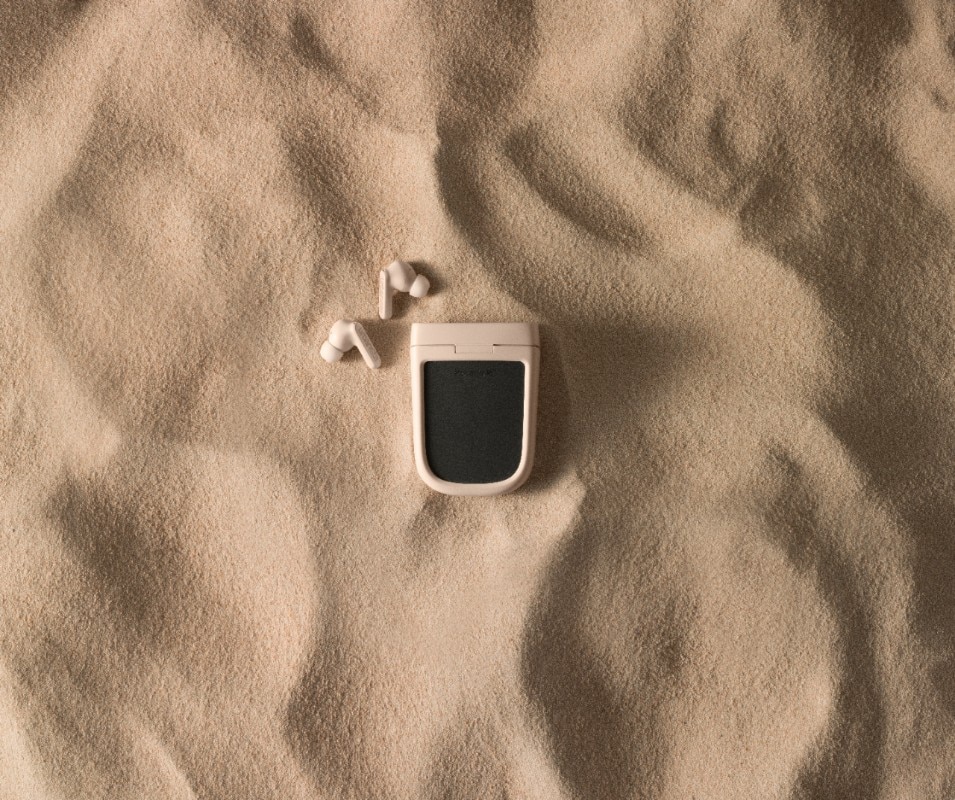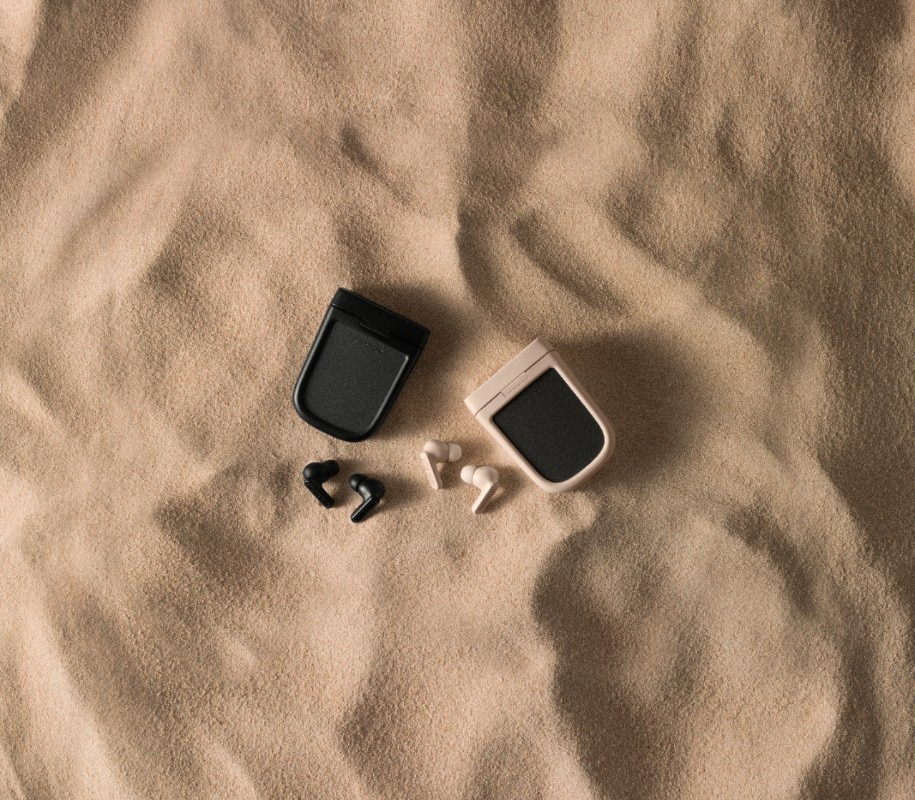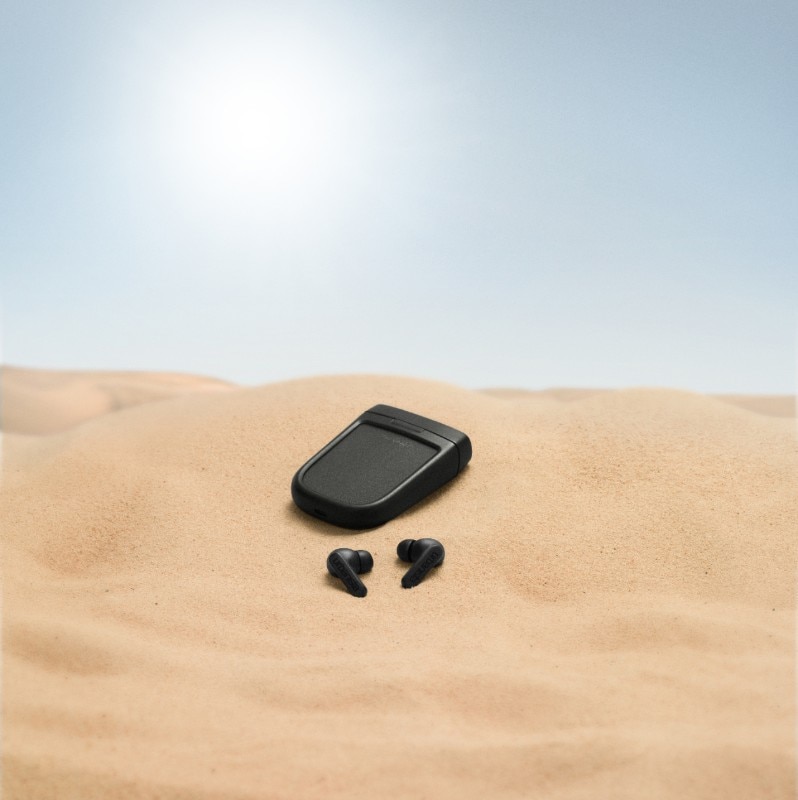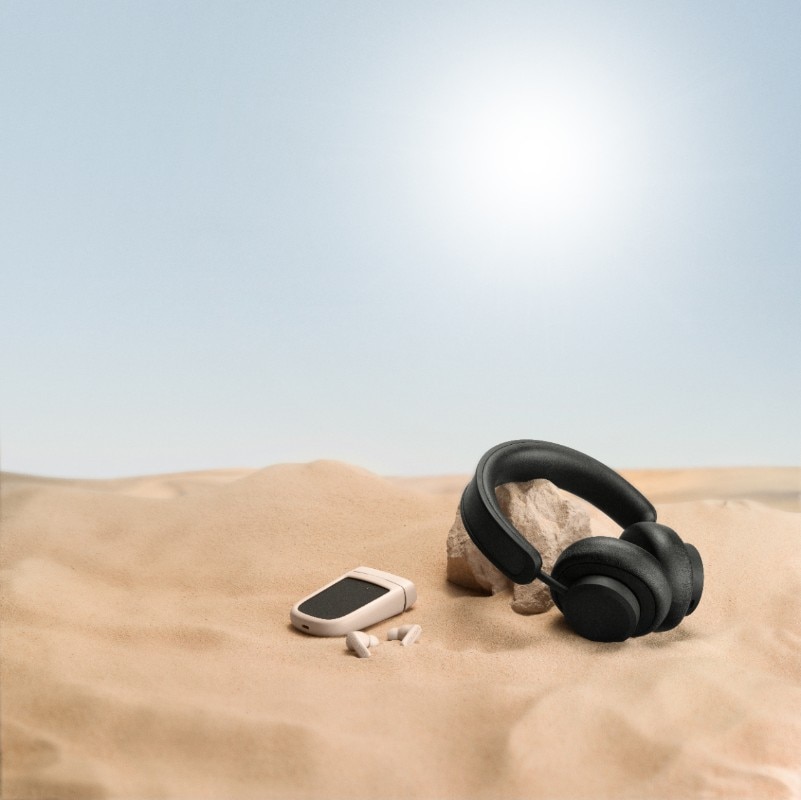Standing out from the pack, the new Urbanista Phoenix earbuds symbolically herald a new phase in the highly popular mobile audio industry. What makes them decisively different, though, isn’t just their meticulously crafted design, or their unique color – a distinctive pink that covers both the earbuds and the case, and breaks away from the standard white and the aggressive hues we’ve come to expect from AirPods and the like.
The Phoenix’s charging case is unlike any we’ve seen before: it’s bigger than the ones we’re used to, and one side is covered with solar cells that recharge its battery. It also features a lanyard to hang the case around your neck or backpack – an explicit invite not to stash it in your pocket, but to leave it exposed to light at all times so that the battery recharges without relying on mains power. The expected total playtime is 32 hours – among the best around.

Urbanista is a Stockholm-based brand that has made its way into the crowd of personal audio devices – e.g. headphones and earbuds – mainly because of its clear references to Scandinavian taste in terms of colors and shapes. Urbanista’s cool industrial design fully matches its fresh, trendy look – visibly inspired by that of more millennial fashion brands – and does give off urban vibes, as the name suggests. Beyond that, Urbanista’s products are reliable mid-priced options with decent audio quality.
Well, at least until late 2021, when the company changed pace by announcing a totally innovative pair of headphones, the first solar-charging ones. It called them Los Angeles – a perfect name that immediately evokes the sun, and freedom of movement while adding a little hype, which never hurts. It would be wrong to think of this as just a fancy move to get noticed in the market: in the coming years, we will probably see more and more solar-powered devices. Even bigger Samsung went solar with its remote control, which Domus named one of the 20 most iconic objects of the past year. And who knows what the future holds for the next Galaxy Buds?

“I’ve practically never charged them, maybe once”, says an employee of Exeger, the startup that creates Powerfoyle, the solar cells Urbanista uses on its products. Powerfoyle is a high-quality technology, capable of transforming “any outdoor and indoor light into clean, endless energy” as the website states, even via small surfaces. Also crucial is Powerfoyle’s particular ability to adapt to different shapes, including curves, which is essential for placing it on a pair of headphones or over an earbuds’ case. Our totally informal chat with Exeger took place at IFA 2022, where Urbanista presented the Phoenix to industry insiders. We tried to reach Exeger to get official quotes for the product through Urbanista, but the company referred us to the info page on the website.
The Phoenix rocked both IFA and CES, the other major consumer electronics show that’s held each January in Las Vegas, racking up awards – five in total – and winning best in its category on both occasions. Sure, in an industry where repetition is almost a mantra, these buds are such a breath of fresh air that it was almost predictable they’d win awards.
However, after a few weeks of intensive use, we are left with some disappointments. This is not about the earbuds being unreliable; on the contrary, they are extremely efficient and give their best during calls especially. The sound is decent – in line with the medium price range (Phoenix start at 150 euros) – occasionally stuffy, with bass notes that sometimes lack definition. The app doesn’t allow much customization, but it provides interesting data on the charging levels achieved with light, which is also measured in minutes of playback gained.

What’s not quite right about the device is that the solar panel is only on one side of the case, so you have to make sure that’s always exposed to sunlight. Trying out the earbuds in Milan and Paris in January certainly didn’t help. Despite our best efforts to always wear them facing the right way, within 15 days of using them, the app showed a scant 30 minutes of solar charging. And unlike the Samsung remote, which draws power from router waves, the Phoenixes’ indoor charging experience was a fail or barely a pass. So here comes the obvious consumer question: there are many excellent earbuds out there that cost about the same, have similar battery life (around thirty hours) and offer fast wireless or wired charging; many also have better technical and sound features – why buy the Urbanista Phoenix, then?
In conclusion, it’s great that Urbanista puts these earbuds on the market at an affordable price of around 150 euros. However, one immediately feels the lack of a pro model that would come with better audio, better controls, and a beaming and forgettable charging system. The latter is particularly important – the UX these earphones have to aspire to, in order to be relevant, is the total absence of the user’s need to think about recharging them.
The question isn’t whether we will get there, but when. The road ahead looks clear, and we hope that in a few years, these earbuds will be remembered as an important first. In the meantime, we resorted to the Usb-C port to charge them from the home socket.











